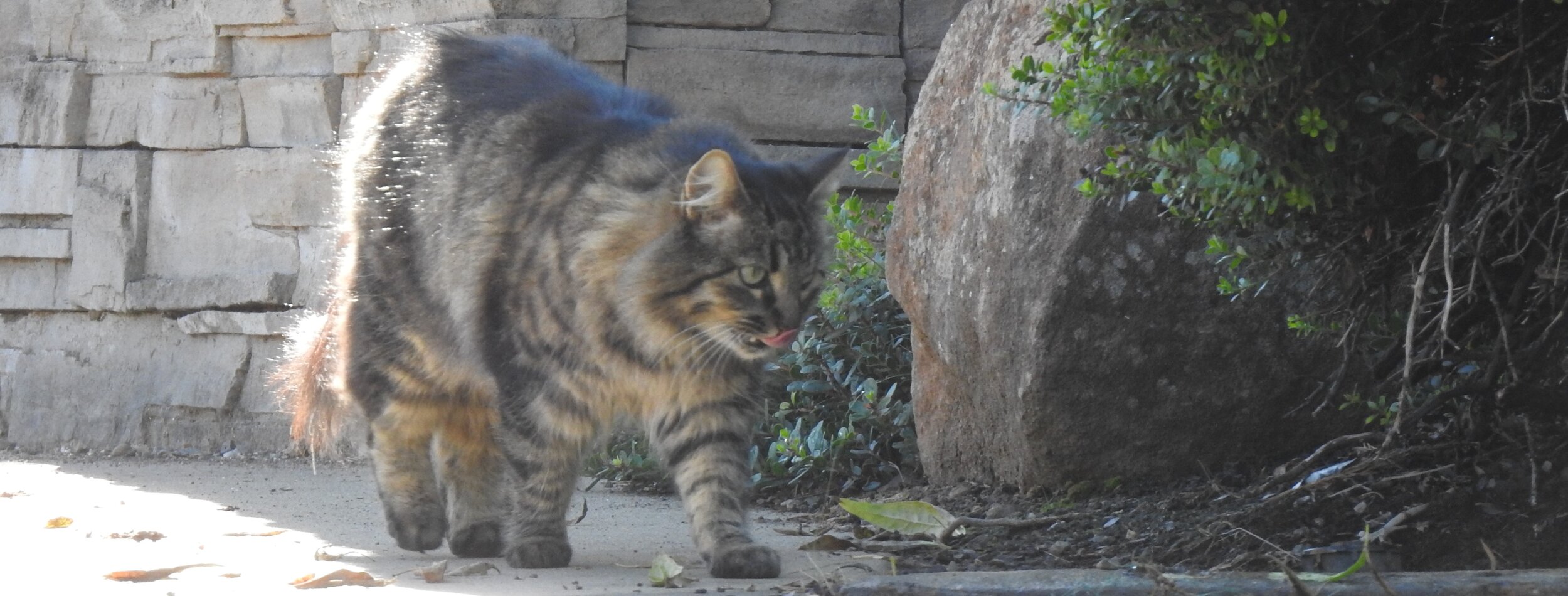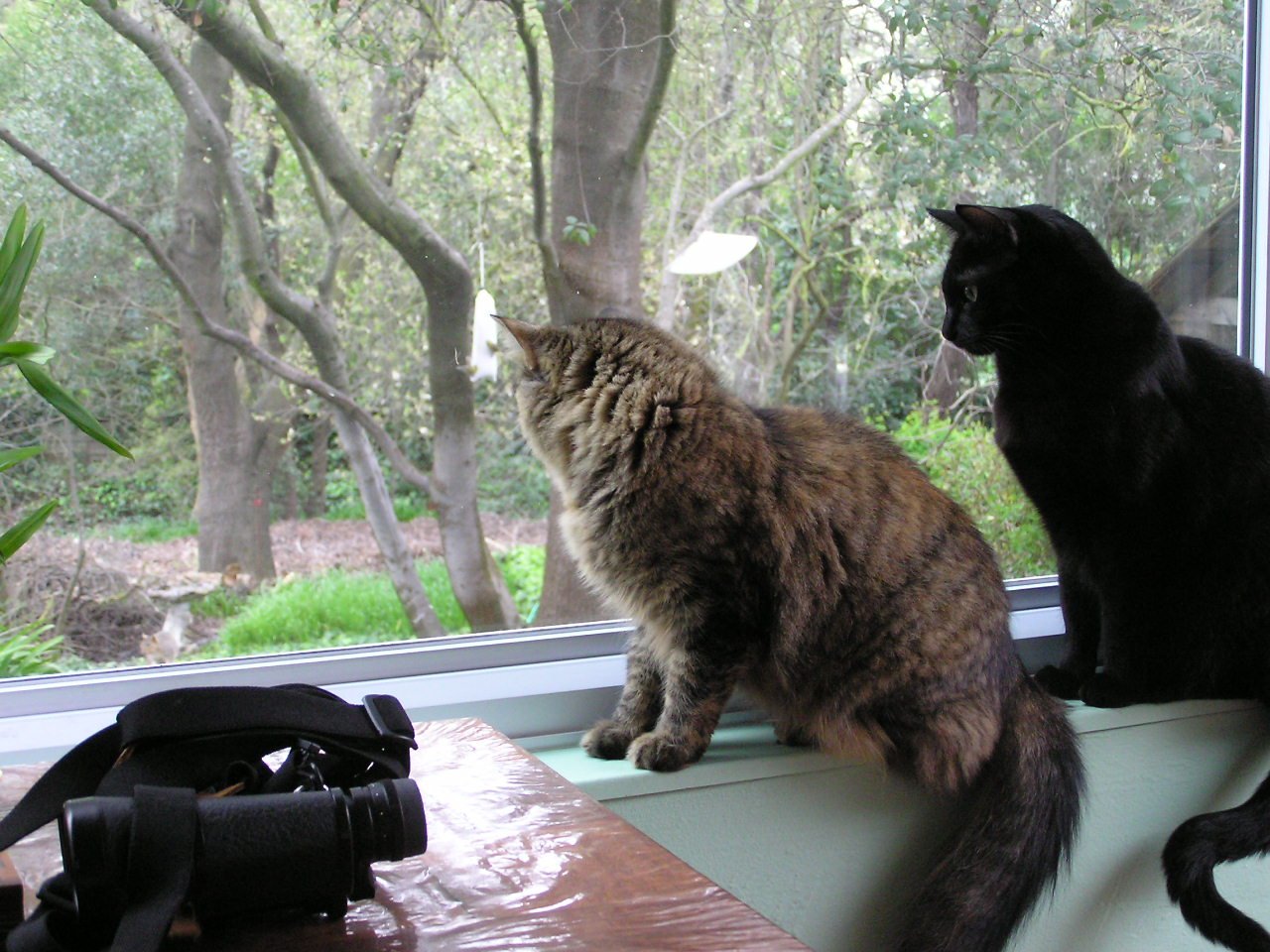Cats Kill 2.4 Billion Birds Annually
The American Bird Conservancy estimates that in the United States 2.4 billion birds are killed by cats annually. Both free-roaming pet cats and feral cats are responsible for this depredation. We at the Sacramento Audubon Society believe this is a problem we can no longer ignore. (ABC, “Cats Indoors”)
Cats are a non-native species.
Although they bring joy to millions of Americans, cats are not native to North America. Originating in the current-day Middle East, their popularity grew with the rise of agrarian societies that relied on cats to kill mice found in granaries and dwellings. They also controlled rats on ships which, in turn, introduced cats to all parts of the globe including the New World.
As an introduced species, cats do not have natural predators keeping their numbers in check. And their reproductive capability is astounding. The Sacramento SPCA estimates that within four years one cat and her offspring can produce 10,736 cats (SPCA, “Why Spay or Neuter Your Pet”). A female cat can get pregnant at four months. The Humane Society of America estimates that 85% of the pet cats in the United States are spayed or neutered, but only 2% of the 30 to 40 million feral cats have been altered. These numbers are not only an argument for even more aggressive spay/neuter campaigns, but they also show the staggering number of cats still reproducing.
Cats are Predatory by Nature
Cats are predatory by nature. All that playfulness with the feather(!) toy? Adorable yes, but Fluffy is also practicing predatory behavior. Ample food available? No matter how full a cat’s belly, it will still prey on birds. However much they seem domesticated (or not, in the case of feral cats), pet cats are still “the tiger on your couch”. Consequently, when 100 million non-native predators (the estimated number of outdoor and feral cats) mix with wild birds, the result is massive bird death and/or injury.
Cats Cause Bird Deaths Indirectly
Cats cause birds to die indirectly, as well. For example, bird parents attend to the nest less often when cats are present, thus impacting the health of chicks and decreasing their likelihood of fledging. Cats also kill small mammals and reptiles in huge numbers. While a transgression on its own, these mortalities also impact the food source available to birds of prey. The reduction in food can reduce the lifespan and reproductive period of birds; not to mention other wildlife dependent on small mammals for food. (ABC, “Cats Indoors”)
Wild Birds Are In Crisis
Wild birds are in crisis. Their very existence threatened. Habitat loss, climate change, and cat predation are the root causes of their plummeting numbers. Birds are either being killed outright or, due to shrinking and fragmented habitats, never given the chance to be born. What is to be done?
The Sacramento Audubon Society Policy on Cats
Sacramento Audubon Society, agrees with the science put forth by American Bird Conservancy on the impact of cat predation on wild birds. Based on this information, we consider cats, domestic or feral, to be a grave threat to birds and other wildlife. We feel strongly that steps must be taken to limit contact between wild birds and cats. Towards that end, Sacramento Audubon Society supports the following policies:
Feeding of cats or maintenance of cat colonies should be prohibited in all designated wild areas. The American River Parkway is one example of a designated wild area in the Sacramento region.
Feeding of cats or maintenance of cat colonies in wild areas should be prohibited even if these areas are not designated as “wild”. Wooded parks and riparian areas are examples of this.
Pet cats should be kept indoors.
Local animal shelters and rescues should educate the public about the dangers cats pose to wildlife. Specifically, both their policies and literature should state that free-roaming cats harm and kill birds by the billions and that cats should be kept indoors only unless safe alternatives are provided. This information should be highlighted, not buried or omitted altogether.
What You Can Do To Help
Keep your cat indoors.
Be a responsible pet owner. Spay/neuter your pets. Pet overpopulation is a serious problem.
Surrender your cat to a shelter or rescue if you can no longer keep it. Try to find it a good home but if you are unable to, take it to your local shelter or rescue. DO NOT ABANDON YOUR CAT. At least at a shelter, it has a chance to find a home. Abandoning your cat is a likely death sentence not only for your cat, but for birds and small mammals as well.
Do not attract birds to your yard if you are unwilling to keep your cat indoors. Refrain from installing feeders, bird houses, or birdbaths.
Declawing is not a solution. Declawing is a barbaric practice that can cause a lifetime of pain to your pet. It is also ineffective - cats can kill birds without using their claws.
Do not feed a stray cat unless you are going to keep it as an indoor pet or take it to your local shelter or rescue group.
Speak with your neighbors about the danger their free-roaming cats pose to birds. At the very least, encourage them to bring their cats indoors during those times birds are most active, morning and evening.
If your cat still insists on going out or you have an outdoor kitty that you want to bring indoors, get creative. You can leash train a cat (really). There are backpacks that allow you to bring your cat outside. There is all manner of cat furniture available: cat condos, cat trees and cat towers. If you have the time and resources, install a catio or “catfence” your yard.
You might think we at the Sacramento Audubon Society are a bunch of cat haters. To the contrary, many of us love cats. Many of us own cats. Some of us rescue and foster cats. However, our primary mission as a Society is to advocate for the protection of birds and other wildlife. We would be failing at this mission if we did not address the seriousness of cat predation. Cats, people, and birds can coexist. We encourage our local government, community leaders, and fellow humans to give this matter the serious consideration it deserves and ask that they act on our policies and recommendations.
Past SAS Board Member, Diana Hickson, rescued Galileo and Scaramouche in 2017.
Former SAS VP, Daphne Reimer currently shares her home with Jackie.
Seymour, was rescued as a kitten by SAS Membership Chair, Jane Van Kessel.
Marti Ikehara is a SAS Website Committee volunteer. Her cats enjoy watching birds out the back window of her home.
Past SAS Corresponding Secretary, Heather White, adopted Sandy in 2014 from the Bradshaw Animal Shelter.
Banner Photo Credit: Indigo Bunting © Daniel Lee Brown









